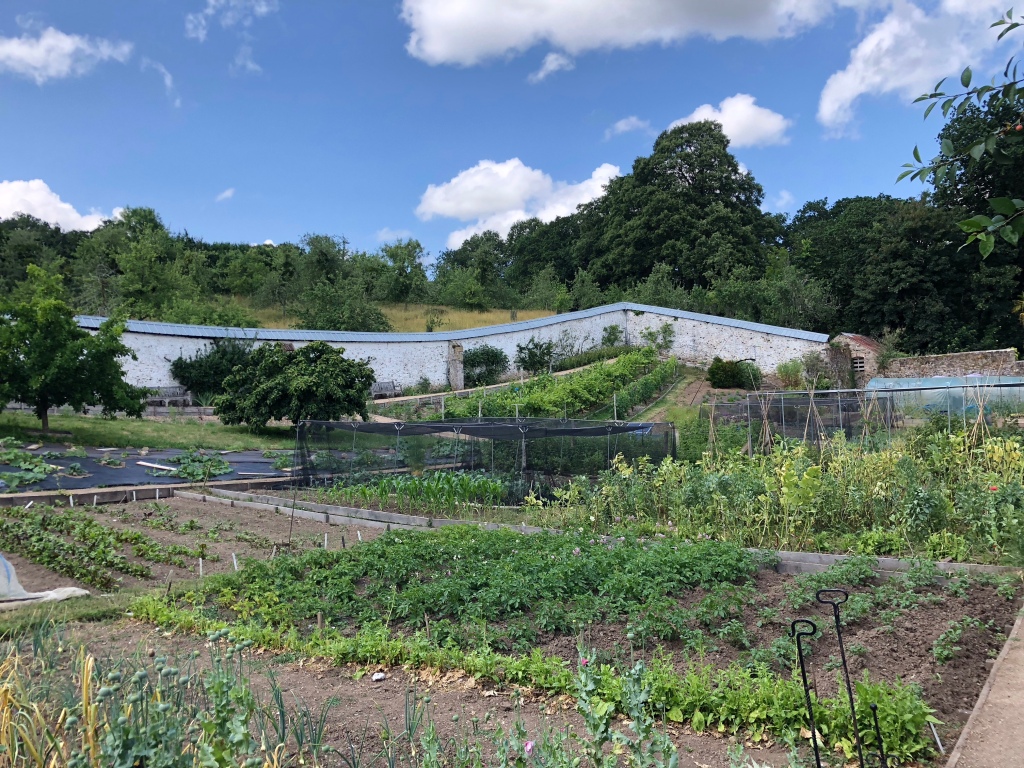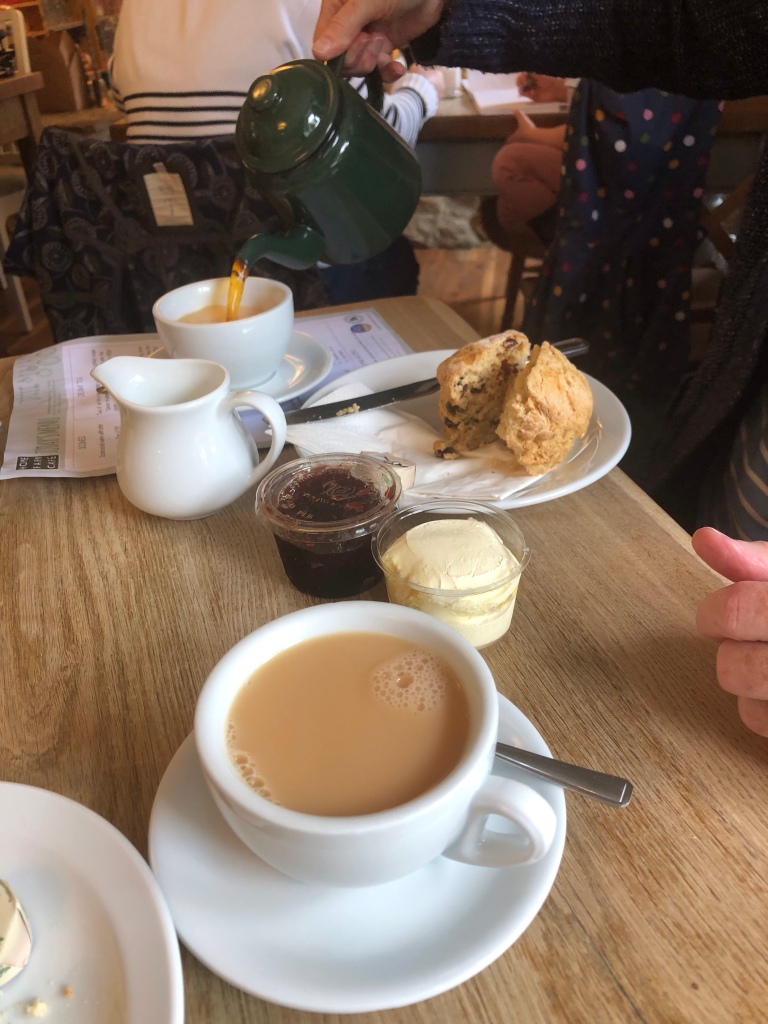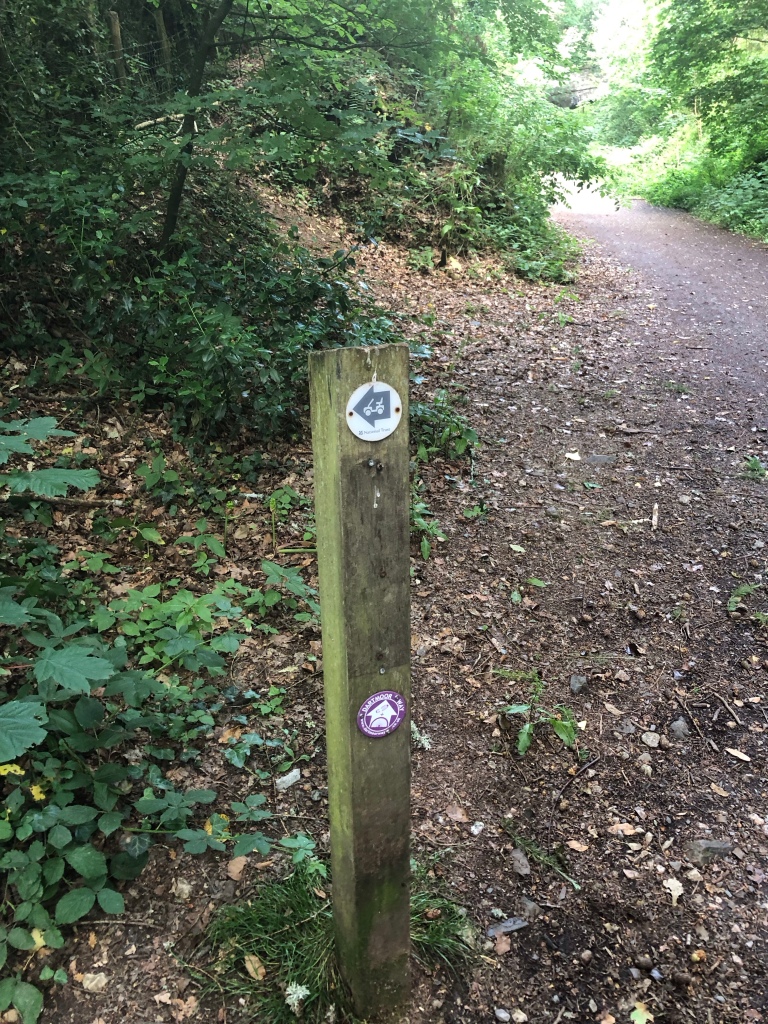PARKE HOUSE
We recently visited Parke on a lovely sunny day during recent heatwave.
Parke is the headquarters of Dartmoor National Park and is located on edge of Bovey Tracey on road towards Dartmoor. The National Trust looks after the grounds and buildings around Parke House.
After driving along a long driveway you come to a large car park. Parking is free for National Trust members. Walking down the slope from the car park you pass a massive walled garden which provided soft fruit for the house from when it was built in the 1800’s. After years of neglect it is now run by the National Trust and Bovey Community Garden. Around it is a lovely orchard containing 150 apple trees and lots of mistletoe.


There are toilets down some steps on the right just below the Walled Garden as you walk downhill from the car park.
HOME FARM CAFE
Located on the right hand side as you walk down from the Car Park. There are lots of outside tables, with umbrellas and a loop to affix dog leads. You can also eat inside (The Long Room adjacent to the path also welcomes dogs and their owners!)
Go inside the cafe to order. If you are sitting outside you are given a buzzer and when your order is ready collect it from the table by the cafe entrance.
The staff are always friendly and most welcoming.



Parke House was built around 1826 and is on the site of a Tudor House with some remains of original house in the gardens.
The Two Ronnies ( Ronnie Barker and Ronnie Corbett ) filmed The Picnic at Parke House and in Bovey Tracey in 1976. The film was set in the 1920’s and featured the squabbling upper classes. It was written by Ronnie Barker and was a silent movie, with no speech but with a music score, sound effects and muttering.
There are several rows of granite posts in the parkland which were rails from the nearby granite tramway used to take granite from quarries at Haytor to the nearby Stover Canal at Teigngrace.

THE WRAY VALLEY TRAIL
We recently walked along this trail through a beautiful wooded landscape which initially runs alongside the River Bovey valley. Overgrown waste heaps are scattered along the river edge from when tin was extracted from the river gravels.The trail follows the track bed of the former Bovey Tracey to Moretonhampstead railway line run by Great Western Railway.
To get to the disused railway go past the back of Parke and cross the River Bovey by a beautiful old fashioned stone bridge.



Walk up the slope ahead to join the track bed ( red route initially) which is used as a cycle way and a level walk. A safety tip walkers listen and watch for cyclists.

You can follow the track bed for nearly 7 miles from Bovey Tracey to Moretonhampstead ( there is a short stretch of the walk near Lustleigh where you have to walk along narrow roads so take care here)
In August 1858 a group met to plan a railway line from Newton Abbot to Moretonhampstead. The line was opened on 26th June 1866. Goods such as timber, livestock and agricultural produce were sent by rail. Bovey Tracey Pottery grew in size. Coal and other commodities were brought by rail for industrial and domestic use. Tourists were also attracted to the area by the railway.
However, the development of road transport led to a decline in rail traffic and the railway closed to passenger traffic in March 1959 followed by the line between Bovey Tracey and Moretonhampstead closing in 1964.
As you walk through the woods you can hear the sounds of the River Bovey flowing over rocks and rapids. You will hear a large range of different bird songs including kingfishers, spotted and green woodpeckers and dippers. If you look into the river you may see salmon or sea trout. Otters can be seen occasionally.


Look out for roe deer, foxes and badgers in the forest. Several bridges span the track bed including one that built so a farmers cattle could reach water from the river.

Near Lustleigh the track bed ends. So follow the road into Lustleigh. To the north of Lustleigh the track bed continues all the way to Moretonhampstead.


More information on the railway can be found at http://www.dartmoorstory.org